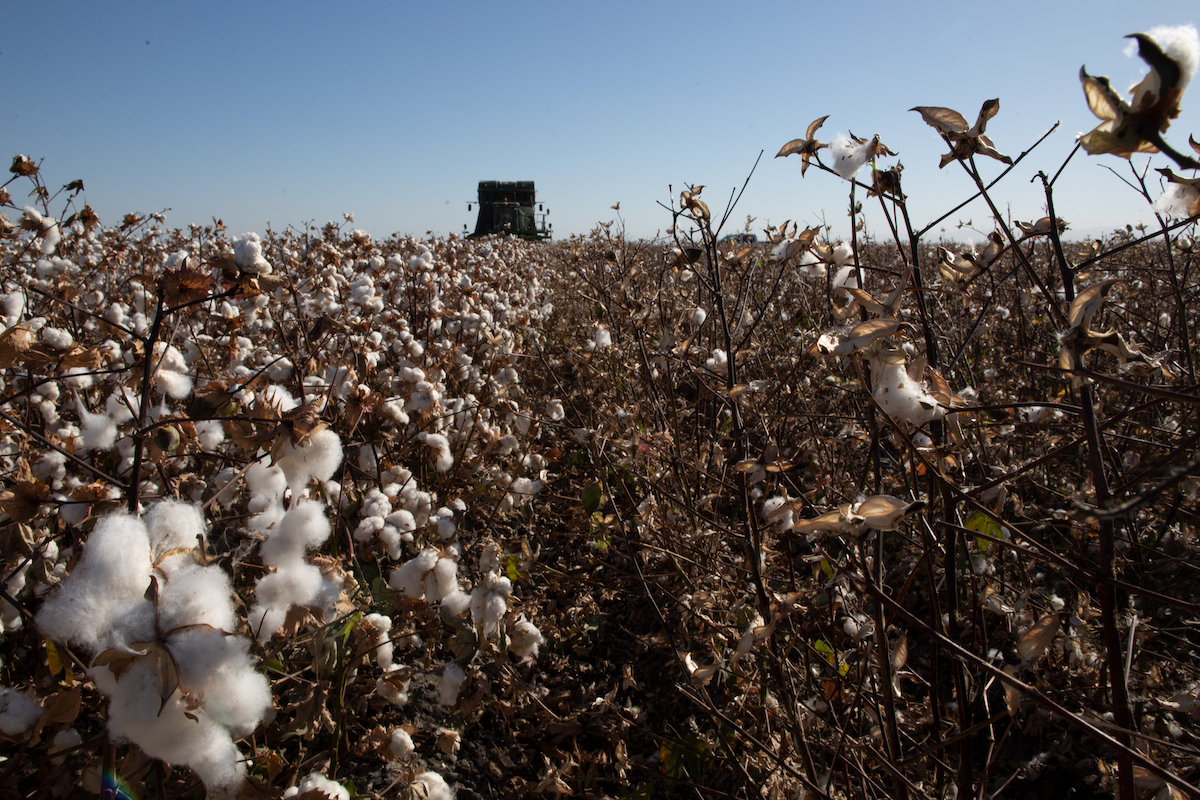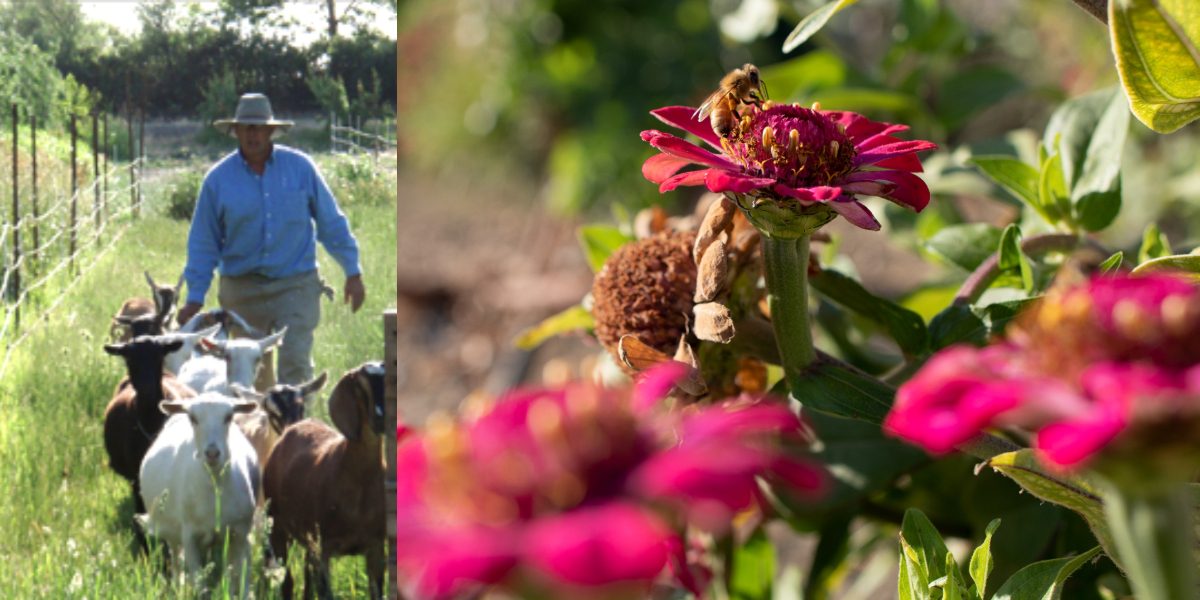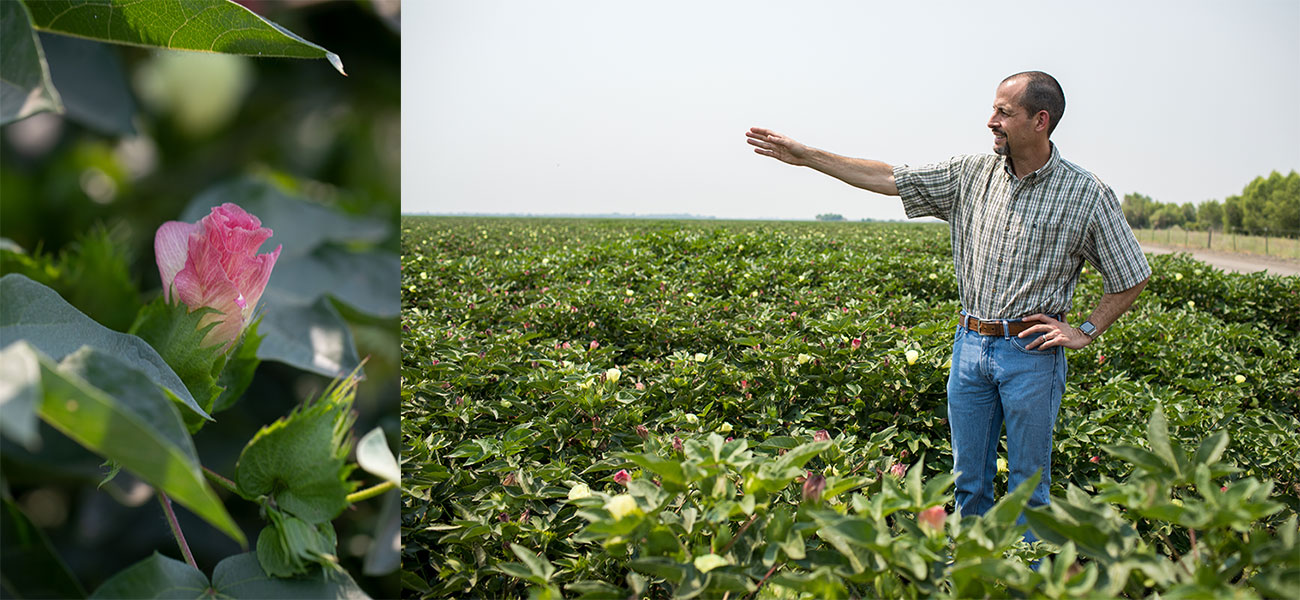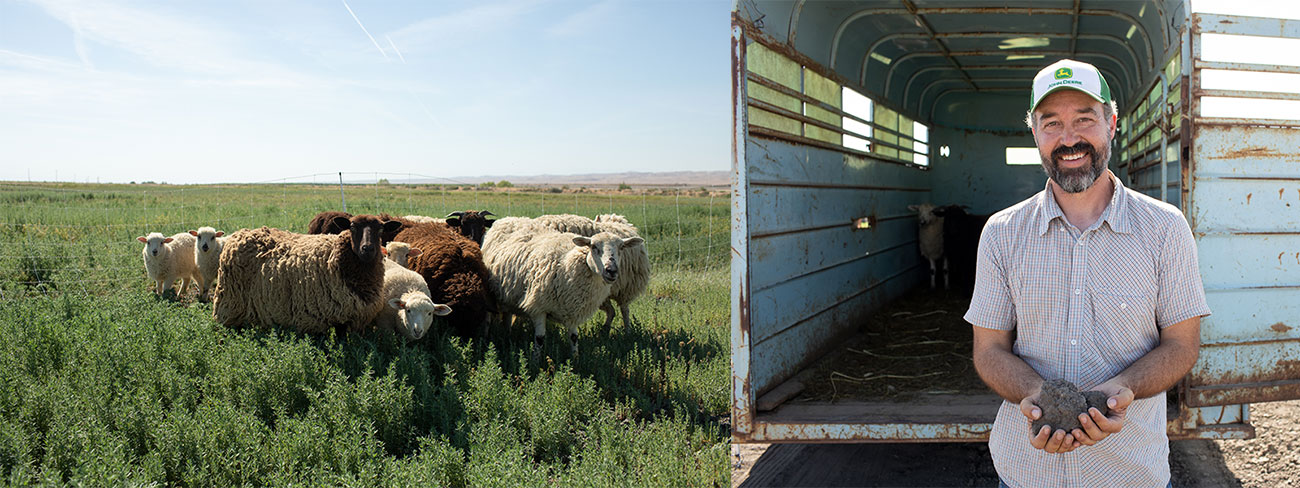Written by Esha Chhabra and Jess Daniels, photographed by Paige Green
In this series, we highlighted stories of cotton producers in California who are continuing the legacy of growing cotton in the state but in a manner that’s more in tune with the current climate, weather conditions, and soil health challenges. Cotton can be grown in a more regenerative fashion, and these tenacious farmers are illuminating the path forward.

Cotton is abundant: in our wardrobes, where it makes up close to 25% of global textiles; in our national production, because the US is the third-largest producer of cotton after China and India; and in our home geography of the Northern California Fibershed, where enough is grown to provide each resident of the state with the equivalent of 7.5 pairs of jeans per year.
The Climate Beneficial™ stamp of approval was created to denote fibers coming from landscapes where carbon flow from the atmosphere and into the soil is being enhanced, and since it’s a practice-based verification managed by Fibershed, it supports farmers and ranchers as they shift their production method. But since it relies on peer-reviewed soil science and environmental systems modeling, it was first applied to wool: sheep grazing on grassland are a “low hanging fruit” for layering on conservation agricultural practices that enhance carbon storage in the soil as well as in plantings along streams and along the edges of fields.
California is 65% rangeland, so there is plenty of room to grow Climate Beneficial protein fiber production, yet designers and wearers alike want to know: what about cotton? So we turned our lens of carbon farming to crop production, and sought to explore the work of four key cotton farmers across Northern and Central California.
However, producers repeatedly told us that if cotton growers in California want to shift their practices, there has to be a market incentive to do so.

“Can there be a way to sequester carbon and produce crops in a financially viable way? Figuring this out has taken me lots of time and money. And it is by no means all figured out yet,” said Sally Fox, who has been known for her breeding techniques, bringing back naturally-colored cotton varieties that had long been forgotten.
For now though Lynda Grose, a pioneer in sustainable fashion and an important leader behind the Sustainable Cotton Project notes, “There is no [large scale] organic cotton in California. There is not a real business case. It’s just too expensive.”
Cotton as a crop is not problematic. Though there is a broader misconception that it takes up significant amounts of water, and can deplete nutrients, producers pointed to other more water-intensive crops grown in California such as many nut trees, alfalfa, rice, and some vegetables. When what we wear is considered in context of what is on our plates, as well as state and local regulations, water consumption comes into perspective.
Crop rotation, as Sally Fox has proven, means that cotton cultivation—along with Sonora wheat, alfalfa, and black-eye peas—can even increase the carbon content of the soil. Through soil testing, she’ll compare the cover cropping on 20 acres of irrigated cropland and 20 acres of non-irrigated cropland. Ultimately she hopes this effort will help increase yields of the cash crops, alfalfa and cotton, and increase the water-holding capacity of all 70 acres of project land.

John Teixeira, who was growing organic cotton back in the 1980s, has long understood the values of farming in tandem with nature; this has led him to convert his ranch into a biodynamic operation, thinking even more deeply about how the ecosystem can support itself without any external inputs.
“I don’t have to buy nitrogen, I just grew it. And that’s the key to organics of the future,” he says. “That’s also money in the bank.” He sees the direct benefits of biodiversity, by adding hedgerows and perennial plantings alongside cotton fields at Lone Willow Ranch and the larger, family-operated Teixeira & Sons LLC.
Across the San Joaquin Valley, the Sustainable Cotton Project is expanding pollinator-friendly hedgerows while reducing chemical inputs: their Cleaner Cotton™ program includes Teixeira & Sons LLC and offers a bridge to markets that won’t yet support the price premiums for Organic certification.

Bowles Farming Company, which is now being operated by the sixth generation of the Bowles family, has taken a similar approach. Over 2,000 acres are devoted to cotton, and soil health is a focus: opting for chicken manure, compost, and other organic matter instead of synthetic fertilizers. Though Bowles is interested in organic farming, the transition to certified organic farming, according to CEO Cannon Michael, requires greater reassurance from the market.
Their Carbon Farm Plan will create a roadmap for implementing practices that build soil carbon and that enhance crop productivity naturally, along with increasing water holding capacity, thanks to technical support from the Carbon Cycle Institute, East Stanislaus and Merced County Resource Conservation Districts and Fibershed. Beyond these on-farm benefits, such practices offer a broader societal benefit by drawing down additional carbon dioxide molecules from our atmosphere and store them in the soil. Bowles is also collaborating on a California-wide cotton research project with Fibershed and Chico State University’s Center for Regenerative Agriculture and Resilient Systems focused on the use of multi-species cover crops.

Lastly, forty-four year old Nathanael Siemens can be seen as a beacon of the future of cotton farming—here in the San Joaquin Valley and beyond. Looking to build a regenerative farm, Siemens is undergoing an experiment on a ten-acre plot that will have valuable lessons for all cotton growers. Using Dr. David Johnson’s BEAM work, he is making a fungal dominated compost for his farm, and working in collaboration with the Center for Regenerative Agriculture and Resilient Systems at Chico State, the National Center for Appropriate Technology, UC Cooperative Extension office in Bakersfield, and Fibershed. Drawing on the regenerative agriculture practices he has incorporated into Fat Uncle Farms, Siemens is trying to revive the salinated soils by bringing sheep into the fields to graze a multi-species cover crop. Integrating livestock into cropping systems is closing the loop: an age-old approach to circularity and soil fertility, forgoing the fertilizers and pesticides that have generated downstream consequences in favor of field-level solutions.

By working in partnership, each adaptation and evolution towards regenerative farming gets cotton farming closer to a truly more sustainable future.
Looking across the landscape, we see at least six key approaches to increasing soil carbon and so much more: integrating animals, rotating crops, building biodiversity with plantings like hedgerows, conserving soil with cover cropping, boosting soil fertility with fungal-dominated compost, and eventually finding methods for no-till cotton that do not depend on synthetic chemistry.
Looking within our wardrobes, we see that cotton is a perennial favorite, and a key component of California’s fiber and dye economy. What’s needed now is more support, from soil to skin, in enhancing soil health and regional supply chains. Small and mid-scale brands are building partnerships directly with farmers working at this emerging edge: from California Cloth Foundry‘s healthy wardrobe staples that incorporate Cleaner Cotton™ to naturally colored cotton designs from Danu Organic, Harvest & Mill, and KOSA Arts.
Cotton production in the United States is historically exploitative, and the crop’s regional relationships have proven taxing to California communities in the past. What we see now is an opportunity to pair global climate stabilization goals with statewide strides to improve water quality and efficiency, toward a local fiber economy invested in regenerating human and ecological health. It starts with exploring the practices, from soil to skin, that can change the course, and the flow of carbon, in California cotton fields.
